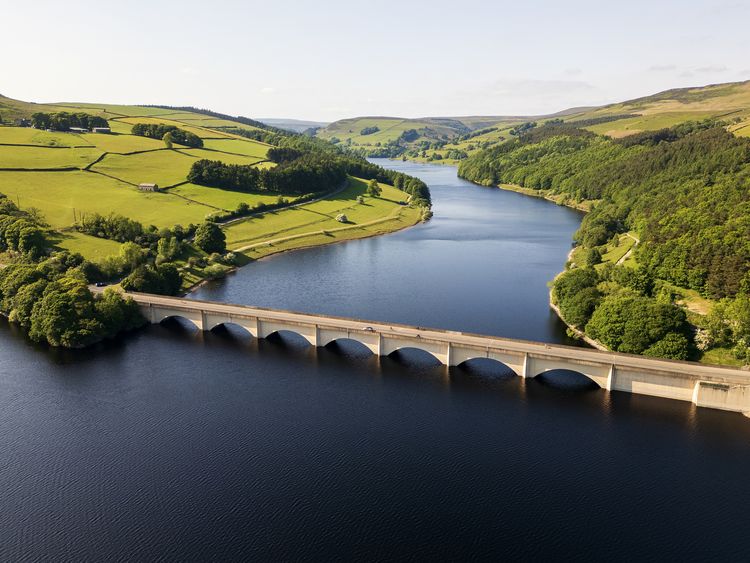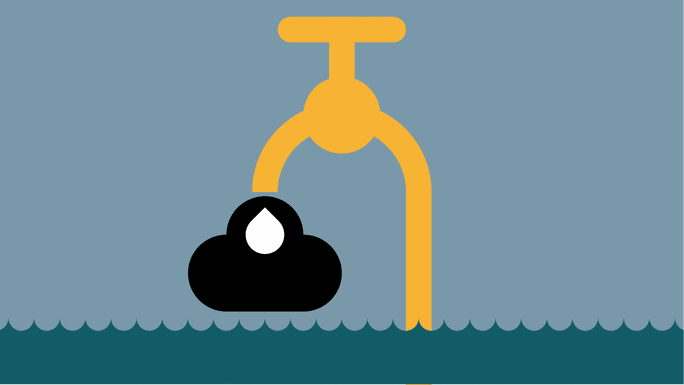ICE debate weighs up potential solutions
The ICE’s Spring Prestige Debate on 1 April focused on the UK water capacity challenges highlighted in the institution’s 2025 State of the Nation report.
The panel of experts it assembled agreed that resource scarcity would, without a concerted effort to tackle it, hinder the government’s home-building plans and even harm the economy.
Panellist Dr Geoff Darch, Anglian Water’s head of strategic asset planning, offered a particularly hard-hitting assessment.
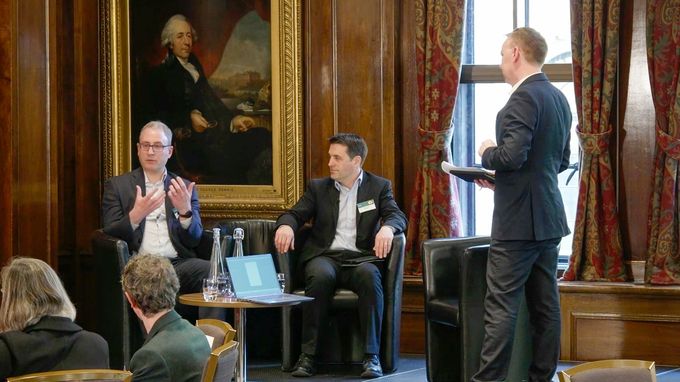
Dr Geoff Darch (left) spoke at the ICE's Spring Prestige Debate
“In our region there’s no more headroom – we’re staring into the jaws of death,” he said. “This isn’t an issue of two to three decades’ time. This is now.”
The Environment Agency expects more effective demand management to account for half of 2055’s extra 5 billion litres per day.

An artist's impression of Havant Thicket Reservoir in Hampshire on its expected completion in 2031. The ICE’s State of the Nation report notes that it will be south-east England’s first sizeable reservoir since 1978 (credit: Portsmouth Water)
Government action required
Still, any potential quick wins offered by recycling and re-use will be hard, if not impossible, to achieve unless policy-makers set clearer priorities for the industry.
These priorities must also better align the work of the three regulators. Even within the Environment Agency, for instance, various teams’ responsibilities can sometimes conflict.
Dr Heather Smith, senior lecturer in water governance at Cranfield University and another Spring Prestige Debate panellist, points to a lack of coordination in central government.
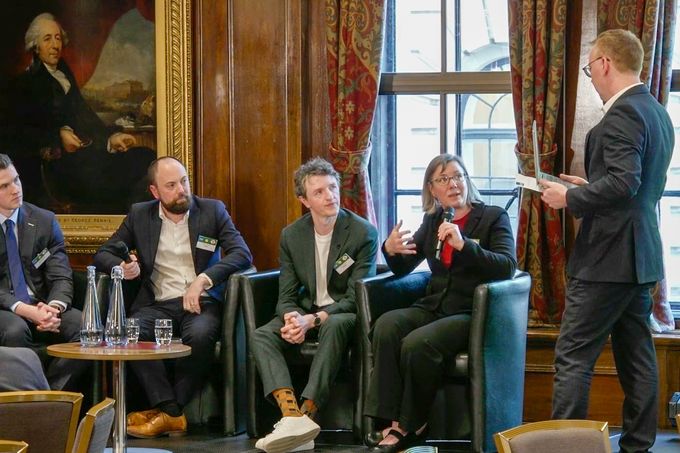
Dr Heather Smith was an ICE Spring Prestige Debate panellist
“Recycling and re-use face regulatory challenges, where there are disconnects between water security, water quality, planning and environmental protection drivers,” she says. “Different parts of a scheme are being evaluated in isolation.”
She adds: “Everyone’s aware that there are disconnects, but the scale of the problem is underappreciated and the regulators themselves can’t change policy to join things up.”
Everyone’s aware that there are disconnects, but the scale of the problem is underappreciated and the regulators can’t change policy to join things up
Dr Heather Smith, senior lecturer in water governance, Cranfield University
Her view is shared by another of the debate panellists: Simon Harrow, Ofwat’s interim director for water resources, environmental planning and RAPID.
Shaping the nation’s water system requires an overview of dependencies, risks, challenges and opportunities, he says. “This involves making some potentially difficult trade-offs.”
Water recycling and re-use in action
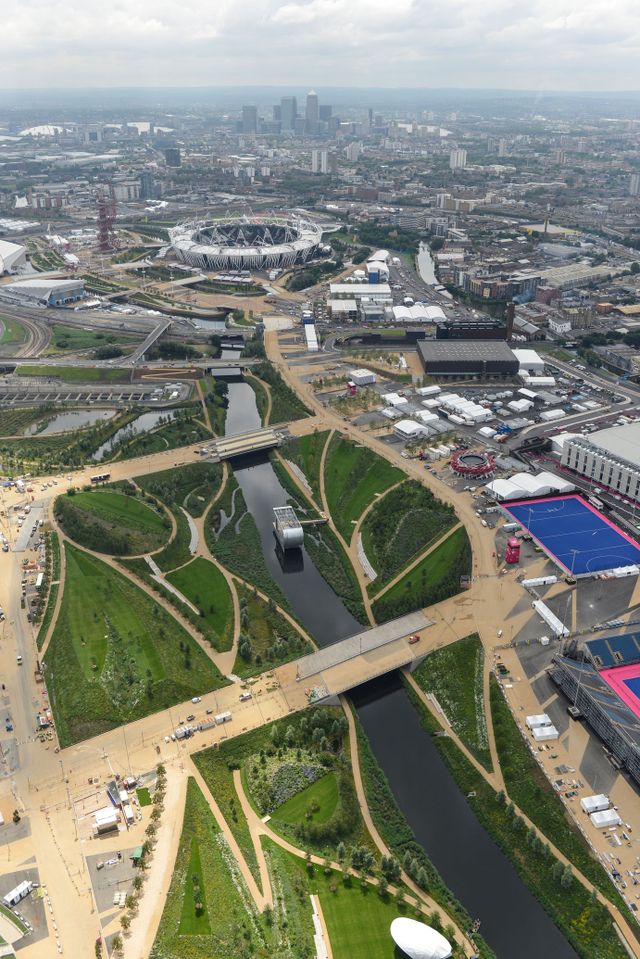
Image credit: Commission Air/Alamy
The London 2012 Olympic Games featured a pioneering wastewater recycling system producing non-potable water – the first of its kind in the UK.
A plant reclaimed wastewater from east London’s northern outfall sewer and treated it using advanced filtration and disinfection. Its output was distributed through a dedicated dual pipe network across the Olympic Park for toilet flushing and irrigation. This cut potable water usage by about 15% in supplied venues. The scheme was decommissioned in 2019 after the site was redeveloped.
Dual water supply systems have also been deployed in housing developments in Cambridge and the south London Borough of Sutton. Examples of recycling for non-potable use elsewhere in Europe include:
- The De Nieuwe Dokken housing development in Ghent, Belgium. The first phase of this system was completed in 2020 as part of the EU Run4Life project. It serves 430 homes, re-using more than 82,000 litres of grey water daily for toilet flushing, irrigation and industrial processes.
- A scheme in the Murcia region of Spain has been operating for 25-plus years. It recycles almost all wastewater in some areas, providing 274 million litres per day to meet intensive agriculture needs.
- Various regional schemes have been developed in Italy since the early 2000s to recycle up to 25% of wastewater for industrial purposes. But projects have been hampered by a lack of regulatory clarity under the EU Water Re-use Regulation.
Easier than gas – technically
Darch believes that the barriers to implementing recycling and re-use systems are relatively low. In his view, they’re more conceptual than practical.
“My go-to example on this is: if we can pipe a flammable gas into people’s homes, why on Earth couldn’t we deliver non-potable water?”
The DWI is already addressing that challenge, having appointed an advisory group to study recycling and re-use projects around the world.
Based on this research, it will publish guidance and recommendations in 2026. The guidance will set out water treatment standards and design specifications. The hope is that this will show policy-makers a viable route forward and offer the sector practical ways to advance key projects.
Water stress in Anglian Water’s region, the East of England, has already forced the firm to impose usage restrictions on industrial consumers – its thirstiest customers.
“The situation is so serious that we’ve had to put a very tight daily limit of 20m3 [20,000 litres] on new non-domestic requests,” Darch explains.
“In effect, we’re saying ‘no potable water’ to businesses wanting to do water-intensive activities in our area. Actually, the same applies to many activities that aren’t all that water-intensive, but we are keen to explore alternatives to potable supplies.”
Innovate or pay the price
Darch adds that Anglian’s challenge is to open its business customers’ minds to new ways of obtaining water.
“People are looking beyond the wholesale cost of water and saying: ‘Blimey, we have to see if it’s possible to source what we need from somewhere else,’” he says.
Somewhere else could be large storage tanks for rainwater and grey water. These offer users the chance to benefit from the requirement for separate surface-water and foul-water drainage systems that’s enshrined in the National Planning Policy Framework, the Water Industry Act 1991 and part H of the Building Regulations 2010.
Somewhere else could also be a wastewater treatment plant. The use of recycled wastewater helps to “maintain summertime flows in numerous rivers and streams that would otherwise dry up”, Darch notes.
RAPID is supporting nine wastewater recycling projects to boost potable supplies, but most manufacturing processes don’t need water of that quality.
This fact could prompt innovation both in the sector and among its biggest customers. Firms that relocate industrial processes close to wastewater treatment plants could tap into their output with minimal connecting infrastructure, for instance. The associated costs and CO2 emissions would probably be offset by whole-life savings on pipe construction, pumping and treatments elsewhere.

Recycling wastewater could help to tackle capacity shortages, especially in warmer months (credit: iStock/Chunyip Wong)
How civil engineers can help
Darch notes that human activity has affected the aquatic environment and the water cycle over the past two centuries to the point where they are unsustainable. Comprehensive re-engineering work is urgently needed, he argues.
That requires a more systemic and outcomes-oriented strategy, reflected in emerging approaches to catchment modelling and resource management planning.
Civil engineers – and everyone else involved in the water sector – can help by stepping back, taking in the bigger picture and being prepared to innovate.
The UK’s water and wastewater networks need to be viewed as one integrated system, recognising their connections with several other systems. Dependencies, impacts, risks and opportunities must be better understood and considered too.
Some compromises will be unavoidable. To work through these, the sector will have to engage more effectively with its stakeholders.
Harrow is hopeful that synergies offering greater returns on investment, and improved outcomes for both consumers and nature, can be found.
“We can get a better bang for our buck,” he stresses – and recycling and re-use could prove key to achieving that.
Independent review urges ministers to end short-termism
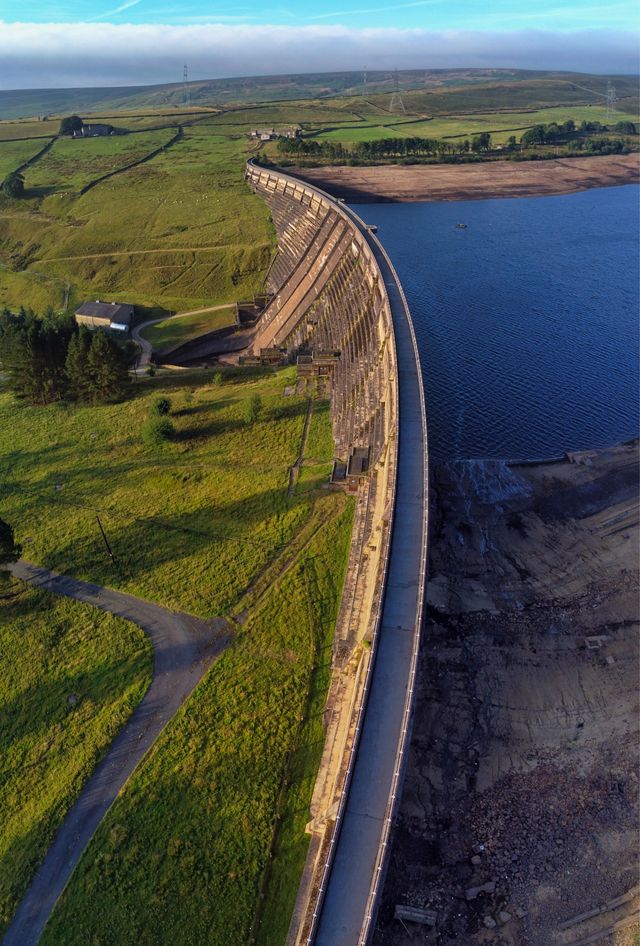
Image credit: iStock/Philip Silverman
In October 2024, the UK and Welsh governments appointed an Independent Water Commission (IWC) to advise on their planned “reset of the water sector”.
Chaired by former Bank of England deputy governor Jon Cunliffe, it published its interim report in June 2025. The document reinforces the overriding message from the industry that it’s looking to the government to come up with a more effective, far-sighted strategy.
In his foreword, Cunliffe states: “The sector needs a clearer and more consistent long-term direction – one that aligns environmental ambition, the provision of water supply and wastewater removal, and the expectations of customers. Too often, policy has been shaped by short-term pressures rather than by sustained, coherent planning.”
He adds: “The legislative framework that underpins the sector must be revisited. Over the years, a complex layering of statutory duties and regulatory obligations has created a system that can be difficult to navigate, both for those delivering services and those holding them to account. A streamlined and more focused framework could clarify lines of responsibility.”
Cunliffe calls for the sector’s regulatory system to be “fundamentally strengthened and rebalanced" and for "a more supervisory approach to water companies... that combines strategic oversight with a deep understanding of company-specific contexts”.
Sign up to receive news from ICE Knowledge direct to your inbox.
